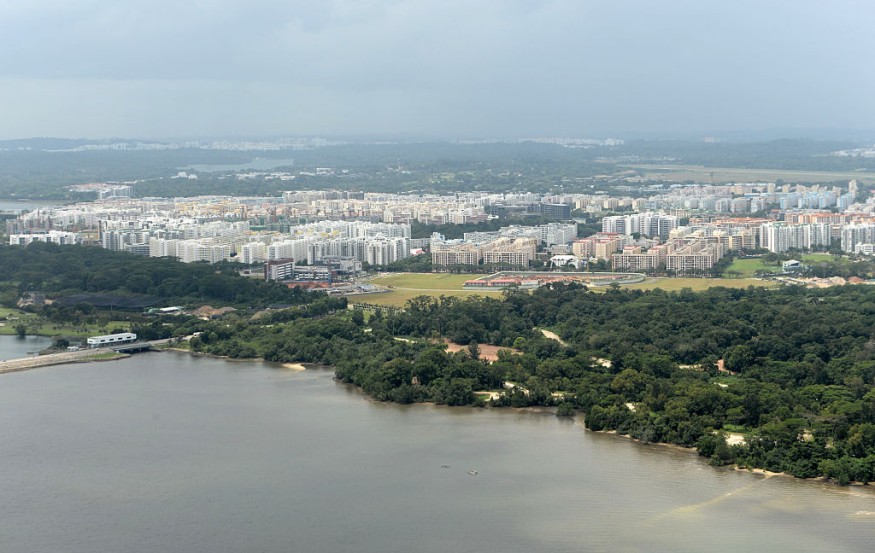
In an effort to combat the impending sea level rise, Singapore plans to raise S$100 billion over the next 100 years. In 50 years, Singapore expanded by reclaiming land from the sea, growing 25% larger - now close in size to all five NYC boroughs.
Despite global rising sea levels, Singapore plans a 4% expansion by 2030. PUB's Ho Chai Teck emphasizes a determined commitment to safeguarding their coastline, vowing never to lose any land permanently, by constructing a comprehensive coastal defense.
S$100 Billion Over the Next 100 years
Roughly one-third of Singapore, including iconic properties like Marina Bay's luxury hub and major banks, lies within 16 feet of sea level, making it highly vulnerable to flooding. With a 1.5°C temperature rise, $50 billion worth of prime real estate faces a high flood risk. Jurong Island, hosting oil and petrochemical giants, is also at risk. Benjamin Horton, a sea-level expert at Nanyang Technological University, stressed that Singapore's exceptional economic wealth magnifies its vulnerability.
PM Lee Hsien Loong committed $100 billion over a century to battle sea-level rise, with $5 billion allocated to a coastal protection fund. Singapore's defense against climate change is existential and crucial for its survival. Other coastal cities worldwide will closely observe Singapore's strategies as they grapple with similar challenges.
Marina Barrage
In Singapore, the Marina Barrage, a S$226 million dam, serves both as a tourist attraction and a vital flood defense structure. It houses seven enormous pumps designed to control excess water during high tides and heavy rainfall, safeguarding 70% of Singapore's coastline. As tropical storms and sea levels rise, strengthening these defenses becomes imperative.
The Hydroinformatics Institute and the National University of Singapore collaborate with PUB to develop a computer model, projecting sea-level rise and rainfall impacts by 2025. This model will identify the most vulnerable areas, considering flood depth and duration. Minister Grace Fu stresses the need for dynamic solutions, avoiding resource waste, and the necessity for future enhancements in coastal protection.
Strategies
Singapore authorities are exploring storm surge barriers on its waterways, designed to remain open for shipping and close during major storms, protecting industrial areas. Other potential measures include raising coastal reservoir dikes, implementing tide gates, and constructing embankments. The airport is building a terminal 18 feet above sea level, with over 6 miles of drainage to prevent runway flooding.
Businesses like City Developments Ltd. and Frasers Property have added flood defenses, but experts believe more urgent action is needed to address rising sea levels.
Mangroves
Mangrove trees at Sungei Buloh Wetland Reserve form unique shapes in response to tidal waters. These trees serve as a natural barrier against rising seas, but for comprehensive shoreline protection, they should extend for hundreds of yards or even miles as seen in Indonesia. In Singapore, mangroves reduce storm wave heights by over 75% and sequester up to four times more carbon than rainforests.
To enhance coastal defense, Singapore is experimenting with combining mangroves and stone or concrete barriers, known as revetments, at locations like Kranji Coastal Nature Park and Pulau Hantu Island.
Sea Walls
According to Daisuke Taira, a mangrove researcher at the Centre for Nature-based Climate Solutions at the National University of Singapore, Singapore's current sea walls and revetments restrict one potential remedy by promoting the creation of greater mangrove habitats. According to analysts, the nation should conserve the current habitat of tropical trees as well as their bulwark roots.
However, it will probably need to rely more on technical marvels like walls. Taira claims Singapore is one of the hardest areas to grow mangroves in order to keep the seas at bay.
Reclaiming
Northeast of Singapore on Pulau Tekong, innovative machinery and drainage systems inspired by Dutch polders are used to reclaim land below sea level. The first polder in Singapore, a 3-square-mile area, will augment the country's landmass by 1% when completed in 2024 for military training. This method minimizes sand usage, an advantage for a major sand-importing nation like Singapore.
While the region has calmer seas than the Netherlands, its intense rainfall demands enhanced drainage systems. The government aims to verify the technology's safety and effectiveness in Pulau Tekong before considering broader implementation.
Related Article : 20-Year Drought Causes Panama Canal to Run Dry, Causing Maritime Trade Disruptions
© 2025 NatureWorldNews.com All rights reserved. Do not reproduce without permission.





